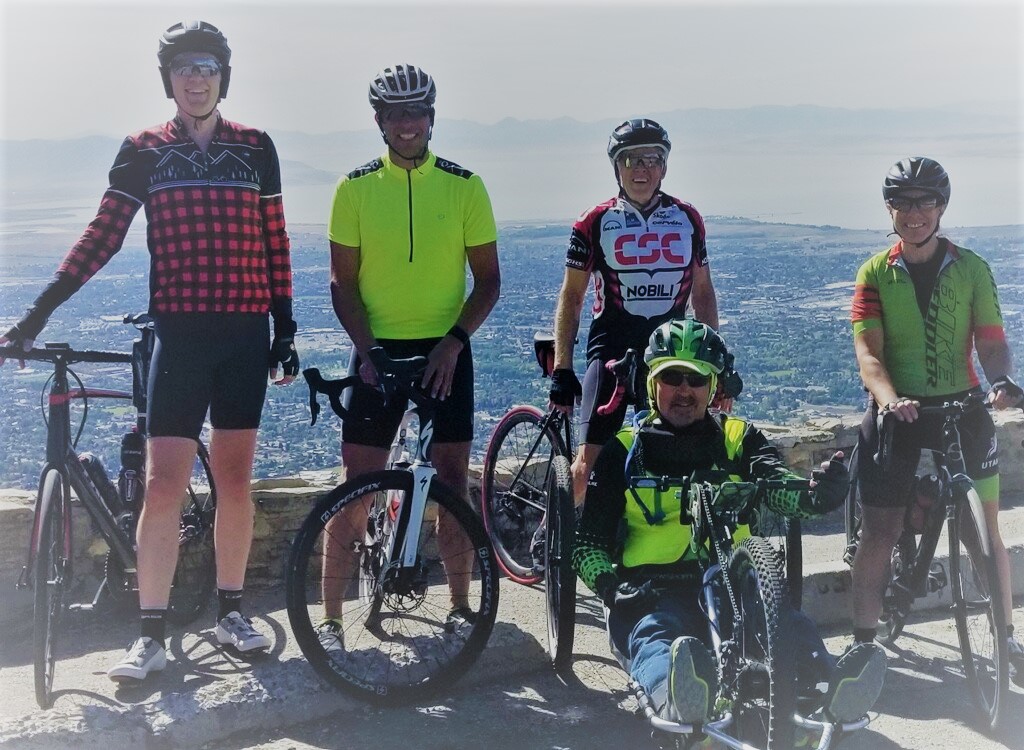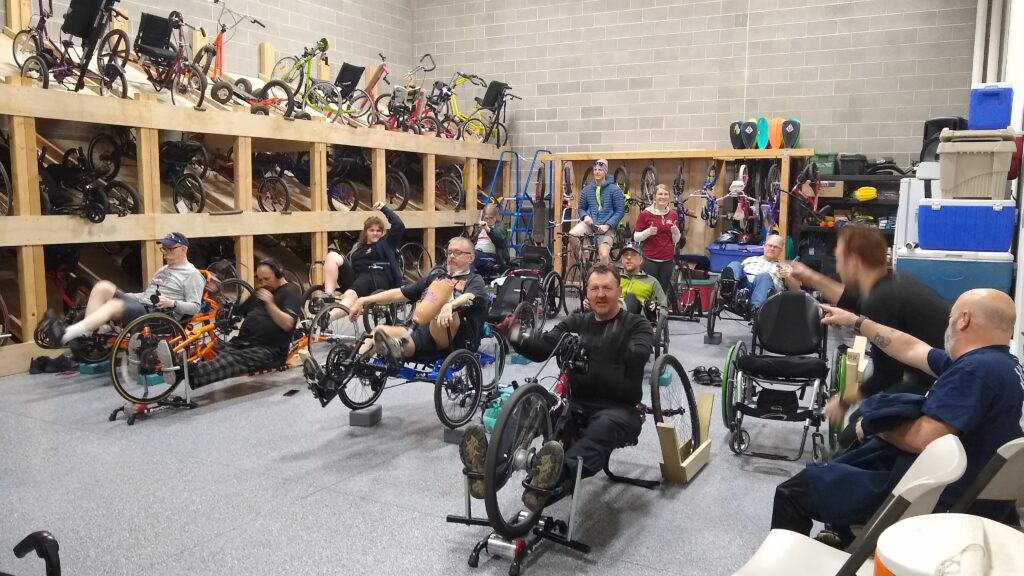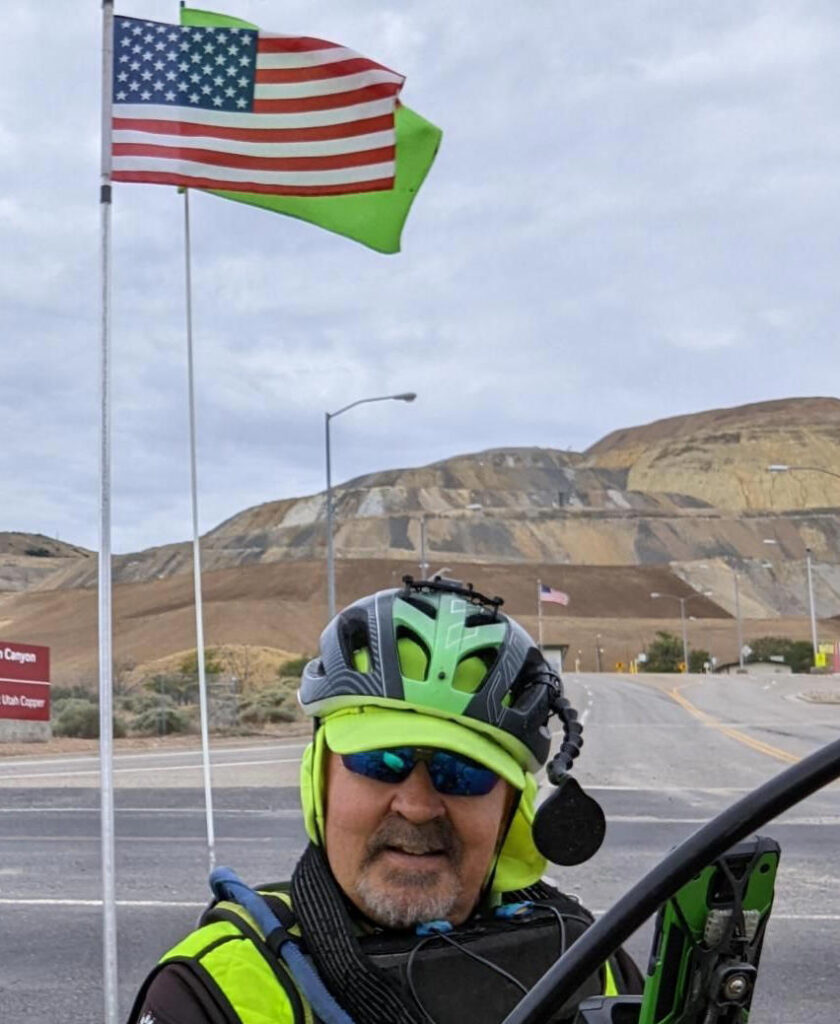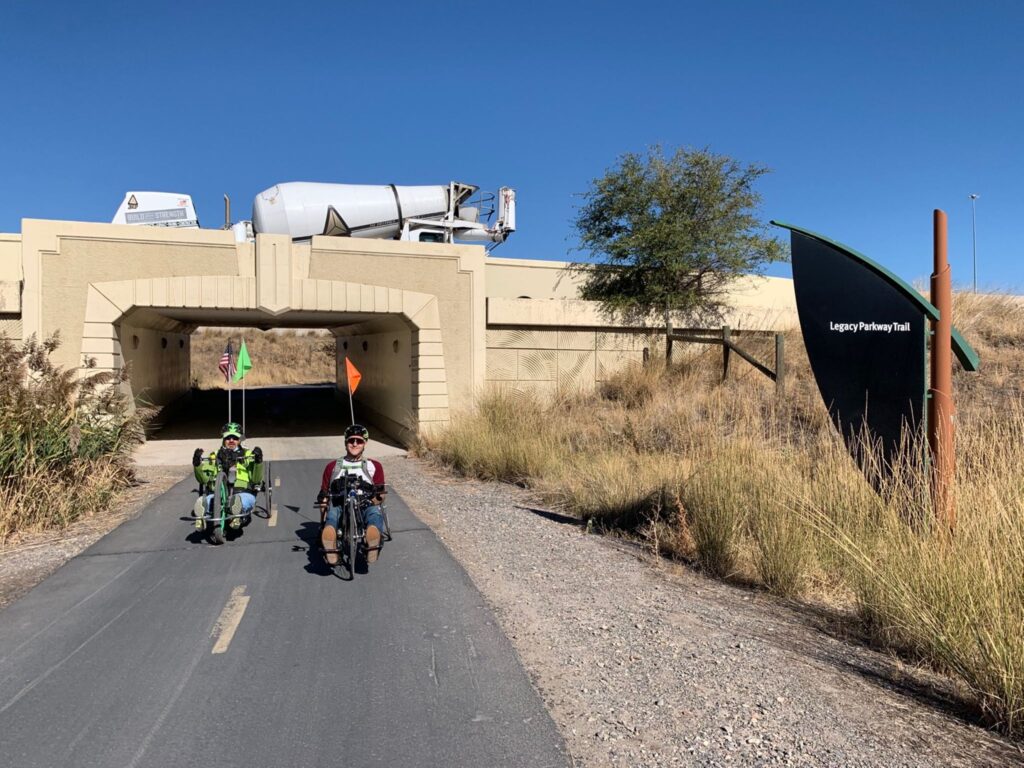Jeff Page: My Journey Back to the Bike and Improving Adaptive Cycling for Others
I started mountain biking in 1986 and fell in love instantly. I rode my mountain bikes and road bikes year-round, three times each week, for 28 years and enjoyed every minute of it.
Then while on a mountain biking vacation in Steamboat Springs, Colorado, in 2015, I rode off a 6-foot drop that I didn’t see and was going way too slow to make the landing. I broke my neck, and I am a C6-7 quadriplegic. I’m paralyzed from the middle of my arms and chest down. Nothing works. No muscles and no feeling. The very worst part is my hands don’t work at all.
So, as you can imagine, I was devastated, and while I was in the hospital for three months, I searched for what type of outdoor activities I could do as a quadriplegic. I searched for the two activities I wanted to do: skiing and biking. But, unfortunately, I didn’t find anywhere that a quad could ski or bike.
Every post or video I saw was all about paraplegics and amputees. They both have working hands and some core strength, depending on where the break-in their back is. So to make it simple, if someone breaks their neck, they don’t have working hands and have quadriplegia; if someone breaks their back, they have functional hands and paraplegia.
Before my injury, I was in great shape. But that all ended quickly, and I had to retrain what muscles still worked and how to work again. Before my injury, I worked with my body all day at work, rode bikes, backcountry skied, and snowboarded at resorts. After my injury, I have about 60% of the bicep strength of an average out-of-shape person and 30% of an average out-of-shape person’s triceps strength.
After nine months of no biking or skiing, I found the TRAILS program, and they had hand-cycles that I could try at a park 15 miles from my home, and they offered instructors to ride along with me if something went wrong during the ride, which it often did. So, I went there and gave it a try. It took me two hours on that first ride to make two loops around that park. But it was something I could do outside. So, I kept at it, and after three months of riding, a very kind lady, I wish I could remember her name, gave me a used Top End XLT hand-cycle.
The following year, I found Wasatch Adaptive Sports; they also offered hand-cycles to ride if you didn’t have one. The most significant difference was they were very close to my home. I didn’t have to drive uptown and ride at the same park time after time. I could ride even from home and meet them along the trail. I also discovered NAC offered the same thing if you wanted to drive to Park City and offered the ability to ride on dirt, not just pavement. Riding off-road was exciting because it was more like mountain biking which I enjoyed so much before my injury. But here, I discovered I needed a power assist even more than on paved trails and roads. After years of riding, I found the pavement worked better for me. In fact, I was on a mountain bike ride last September in Park City Resort, crashed, and broke my neck again. I missed the whole sit-ski season and am just starting to ride again. I need even more help riding now than before. I also lost the ability to turn my head, so I can’t drive yet, and that has been difficult to deal with, losing my independence.
I am looking forward to Riding with Wasatch Adaptive Sports more than ever. Without the programs available to other disabled people and me, others and I would be much less likely to be able to ride. Being outdoors and able to ride and talk to others is also a significant mental advantage.
I need a power assist that works for a hand-cycle with a coaster brake and for me with very weak arms. I also needed a way to shift gears because my hands were strapped to the pedals. I started searching for something that would work for me. I called the major companies selling power assists, and they all told me it did not exist. I was on the internet, continually trying to find things, and nothing was out there. Then after a year of searching, I found Mark at Electrify Bike, and he had just started his business and was working in a small garage at his home, only a few miles from my house. He told me he had the power assist I needed. It was a TSDZ2 that would work with a coaster brake. So, we installed it on my hand-cycle, and I was off and riding.
I also found XShifter and worked with the owner and inventor, Paul Gallagher. With his help, we were able to use his current electric bike shifting, the XShifter, so that I could either shift with my voice and then eventually with my chin so that I could be in the right gear at the right time. Before XShifter, I had to remove my hand strapped to a pedal from the cranks, reach down, make a shift, put my hand back into the cranks and pedal again, and repeat for each shift. It was challenging and frustrating because I would lose all my momentum while shifting. But with the ability to change gears with my voice or chin, I could quickly shift without removing my hands from the cranks. What a big difference that made. I am now the distributor for XShifter it’s an incredible product that can help anybody shift simpler, easier, and faster.
We started converting hand-cycles for the local adaptive programs listed above and individuals with their own hand-cycles. I could see that I was making a difference for others in the same situation as I was. It also made hand-cycling much better for paraplegics and amputees. My main goal for all this was if someone looks into hand-cycling, they will know that it is possible to ride a hand-cycle safely, and all they need is biceps. Knowing this would have made a massive difference in my life for that first year after I was injured. When I started, I had biceps and triceps, but my average speed was five mph, with my longest ride of 25 miles, which took 6.5 hours. At that slow speed, it was more work and less fun. Also, without wind, it was easy to overheat. With power assist, my average speed is 15mph, and I can ride 30 miles in less than 2 hours. My longest ride so far is 110 miles. In one day, I use three 17.5 Ah batteries to ride that far, and I have done that ride three times in the last five years. Now riding is much safer and much more fun for me and everyone else. If you would like you can check out my YouTube channel at youtube.com/user/1FirstRide.
Wasatch Adaptive Sports has worked out to be the best fit for me to be able to ride!




